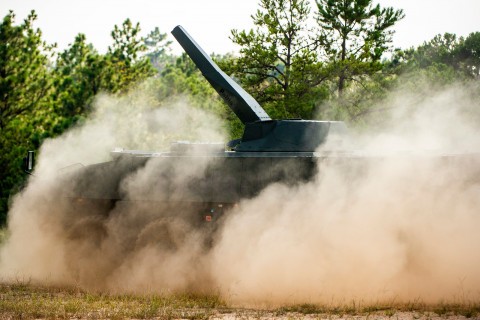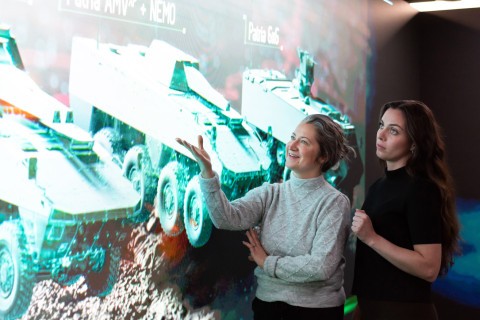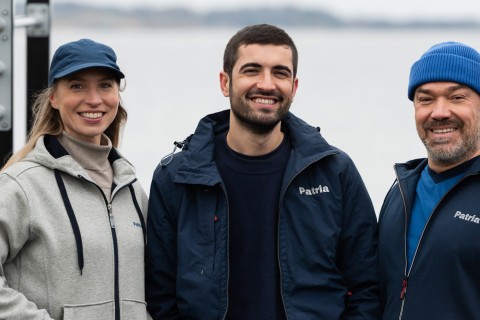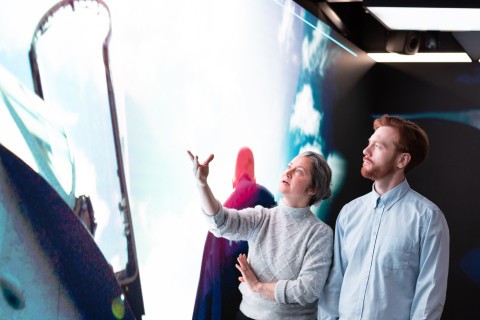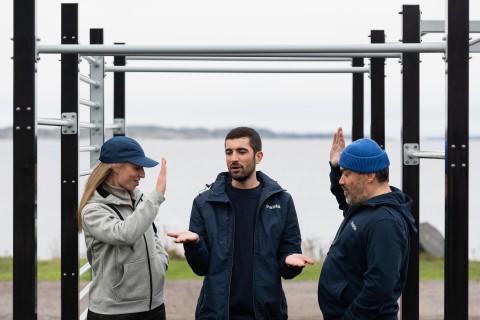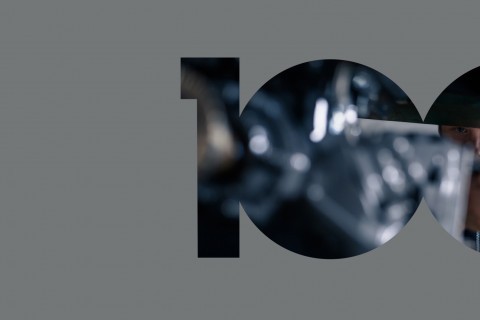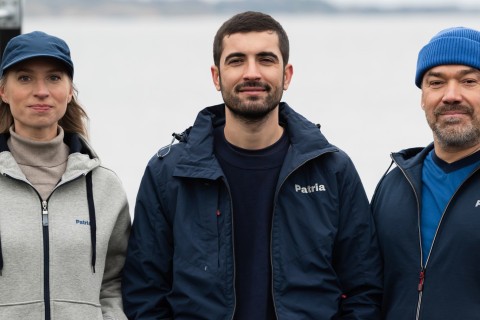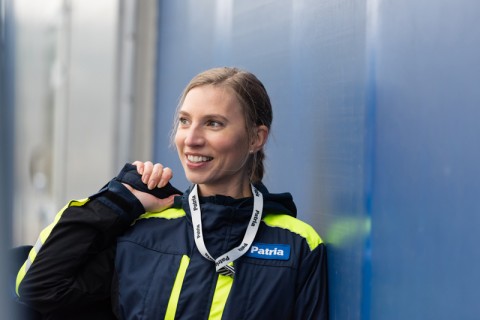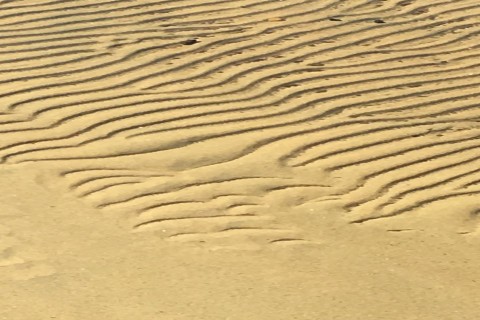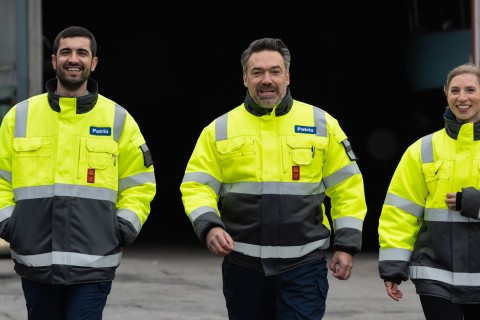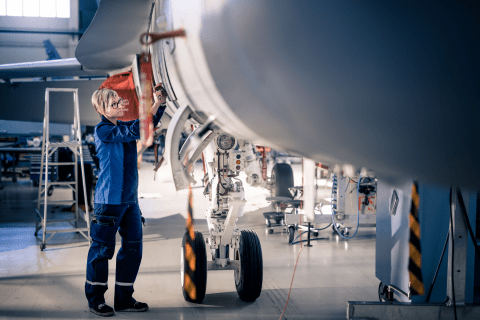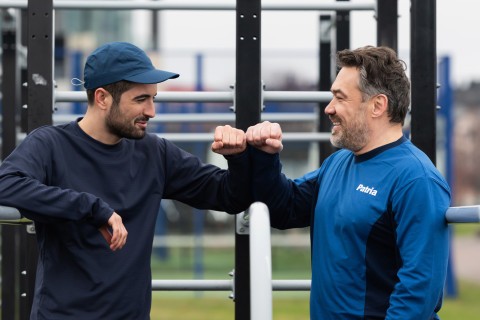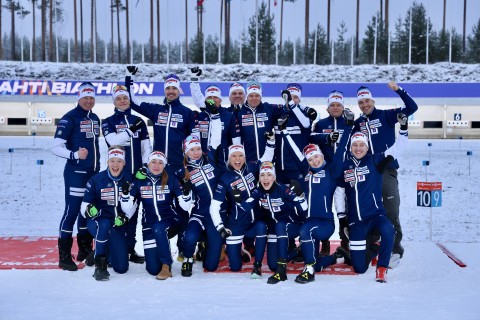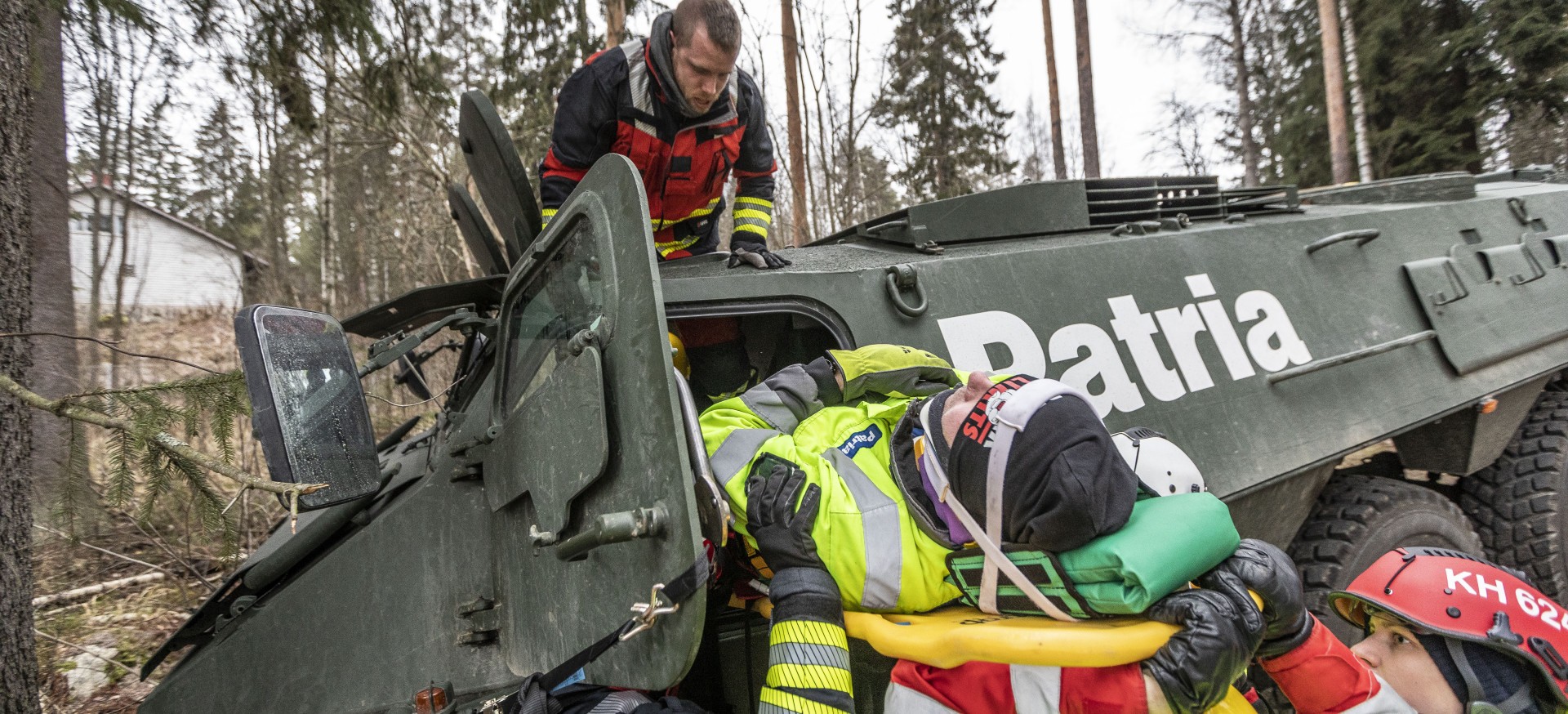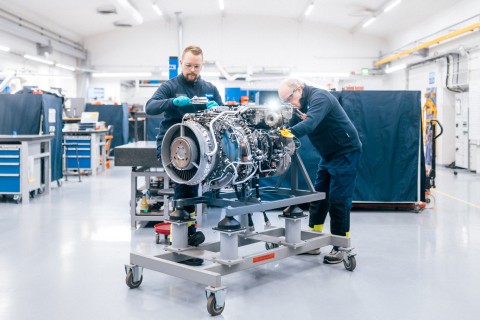
What do I do if a Pasi vehicle is involved in a traffic accident? And how do I get into an AMV to help a driver who has had a sudden attack of illness? 180 paramedics and firefighters from the Tavastia Proper Rescue Department practiced first-aid and extracting people from armoured vehicles in an extensive occupational and patient safety exercise. This exercise, which was conducted in collaboration with Patria, was organised in Hämeenlinna over a period of eight days at the end of last year.
Each day, more than twenty Rescue Department personnel participated in Patria and the Tavastia Proper Rescue Department’s joint exercise. Some of Patria’s own personnel, such as vehicle commanders and drivers, also took part in the roles of people who need rescuing.
"The Rescue Department runs a major simulation exercise twice a year. Our exercise this autumn involved cooperation with Patria, and its special features included accidents involving armoured vehicles and rescuing people from confined spaces. Being able to familiarise ourselves with Patria’s fleet and vehicles was very valuable. This was a diverse and successful exercise whose lessons will be useful in many other difficult situations,” says medical emergency team leader Teemu Kantelinen from the Tavastia Proper Rescue Department.
Patria planned the exercise on the basis of its risk assessment data.
“This exercise is part of Patria’s larger safety efforts and work to ensure that personnel know what to do in the event of an accident. With a good state of preparedness, the right action will keep damage to a minimum,” says Kristiina Martiskainen, who is responsible for occupational health and safety at Patria’s Hämeenlinna office.
Accidents can still occur in spite of good vehicle safety
Training, safety and rescue instructions are essential aspects of the documentation supplied with vehicles manufactured by Patria. Vehicle safety is ensured by restricting the issue of armoured vehicle driving licences to only specified, fully qualified persons. However, when armoured vehicles are on test drives or in regular traffic, they could be involved in an accident.
“Contrary to many road users’ assumptions, armoured vehicles are powerful and easily controllable. They can drive at standard speed limits and therefore do not need to be overtaken due to their slowness. It’s also important for both safety and our image that we always drive carefully and meticulously within the speed limit,” says Chief Engineer Risto Liukkonen, who was involved in organising the exercise.
However, some road users cause risky situations by carelessly attempting to overtake armoured vehicles or even driving alongside them whilst taking photos.
“We haven’t been involved in any traffic accidents with vehicles, but there have been some risky situations.” Driving off the road or getting injured were also included in the joint exercise.
All of Patria’s vehicles have been test driven to confirm that everything is functioning properly and they can drive at the required speeds. These include slalom, braking and lane change tests in accordance with instructions, in places such as closed airfields and racetracks. Defence force vehicles being maintained by Patria are also tested in the same way in accordance with the Defence Forces’ rules.
“The exercise received a lot of good feedback from Patria personnel. The test drivers are grateful for the fact that it will now be easier to get into the mindset for both rescuing people and being rescued. The ability to step into the roles of paramedics and bystanders was also strengthened,” says Liukkonen.
System Safety, which is in charge of vehicle documentation, will use the information and observations gleaned from the exercise to enhance safety documentation. Later, the exercise will also spawn customised training for Patria personnel provided by the Rescue Department.
Rescue work in confined spaces
During the exercise, Patria’s vehicle drivers demonstrated their vehicles’ functionalities to the paramedics, such as locking, how to open hatches, the cab, and the power system. This understanding is required for field exercises.
The situation presented in the exercise involved a Pasi that had had to brake suddenly, injuring both the commander and driver. The commander had difficulty breathing, and pain in his neck, back and chest. He was conscious and could move. The driver was also suffering from neck and back pain.
“Confined cabs pose restrictions on what we can do, and we had to carefully plan how to get the patients out. We used a half-body splint to support the patient’s neck and spine, and a spineboard was used to move the patient out of the vehicle. A vacuum mattress was also used for support. The exercise enhanced both our planning skills and the use of a variety of supportive equipment,” says Outi Järvinen, the paramedic in charge of the exercise.
The simulated AMV accident was slightly more serious, as the driver had had a sudden attack of illness and lost control of the vehicle. Two people had been run over by the vehicle – one had been killed and the other had been seriously injured. The AMV’s driver and commander had also been injured.
“In order to help the patients properly, it was vital for us to be able to get inside the vehicle and understand the dimensions of the space. Although the vehicle itself was new to us, these types of situations are familiar to professionals,” says Järvinen.
“In this exercise, the vehicles were upright, though slightly tilted – but what if they’d been on their roofs? This would have made the rescue operation extremely difficult. These vehicles are heavy and robust. Firefighters won’t be able to cut through the body of the vehicle, which means we have to extract the patients through the hatches. We therefore need to know how they work,” says Kantelinen.
Fast decisions vital, lifting positions must be carefully considered
At the end of each day, both the rescuers and patients’ observations on the exercise were discussed.
“The exercise was good, and was also beneficial for us at Patria. I first provided Rescue Department personnel with guidance on the technical aspects of the Pasi vehicle. For example, we thoroughly covered things such as its power supply, fuel tanks and locking. During the exercise, I was both a driver and a person who needed rescuing. I’ve never been carried out of a vehicle before,” laughed Juha Virtanen, who has 33 years of experience at Patria behind him as both a technician and test driver.
“I had four or five paramedics lifting me, and they were able to turn me and make fast decisions in a surprisingly small space. I had a good, safe feeling as the patient, even though it’s not easy to be rescued from a great hunk of iron,” he says.
A Pasi vehicle weighs about 13,000 kilos. According to Virtanen and his colleague Antti-Pekka Hämäläinen, the exercise made them think about moderation and other road users. They also got a feeling for how to find a common language and how to support the rescuers’ work, as the vehicle and its special features pose quite a difficulty for rescuers. It’s very cramped inside the vehicle, and if you’re not familiar with it you won’t necessarily be able to find and work all the hatch and seat functions.
Firefighter Janne Lehtiniemi and paramedic Harri Äijälä found the exercise to be both useful and successful.
“We got a good introduction to armoured vehicles. It was essential for us to understand how to open the hatches, and how the doors are locked from the inside and you can’t get through from the outside,” says Janne Lehtiniemi.
“When you’re dealing with an armoured vehicle, the patient is one and a half metres above the ground, and needs to be lifted down. This requires several people and the ability to manage an intense situation, so that the patient can be safely and ergonomically taken for further treatment. The exercise was particularly useful in these areas,” says Harri Äijälä.
He also thinks that it’s important to put what you’ve learnt into practice. These vehicle accidents can be compared to, for example, coach and truck accidents. Lehtiniemi says:
“The height we have to lift the patient is comparable to what would be required when dealing with a truck, and it’s vital to keep the patient stable. Practicing situations such as these always leaves a strong impression.”
